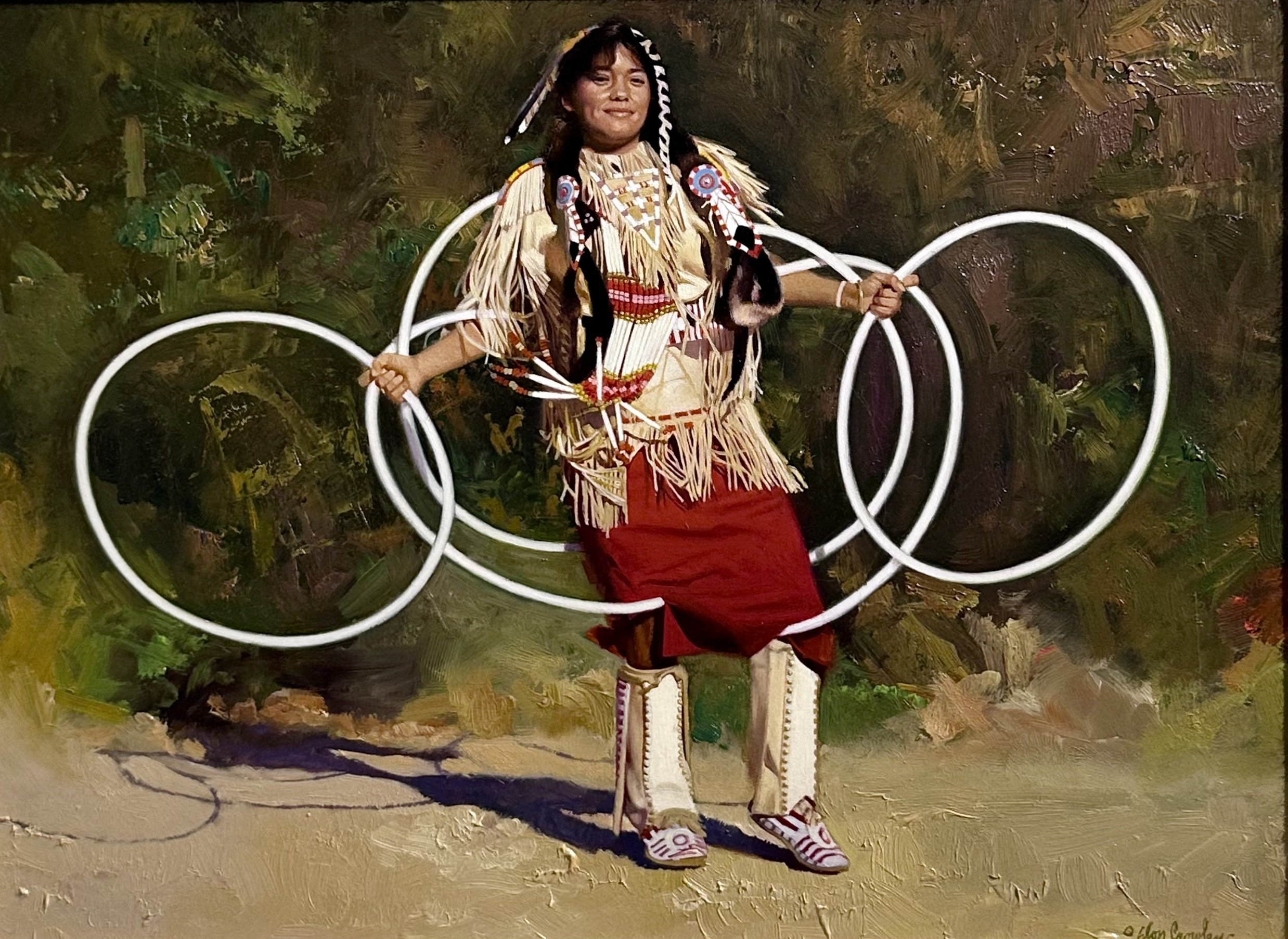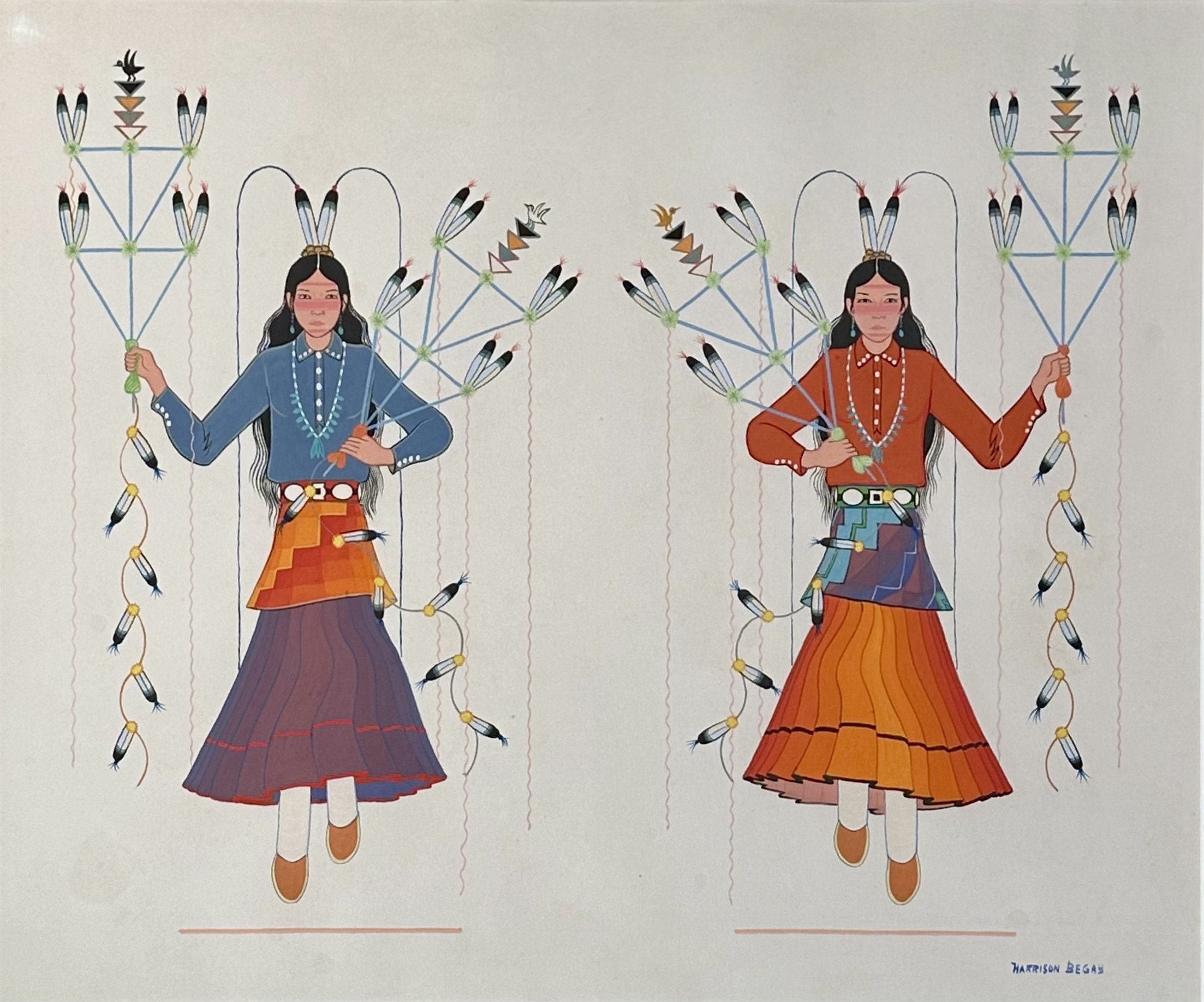The Thick & Thin of Painting Media
/The gallery walls are lined with superb paintings of all kinds—and while each is beautiful in unique ways, deeper appreciation comes with an understanding of media. Here we explore a few common painting media with examples from available pieces at the gallery.
Oil Paint
The first examples of oil painting were seen as early as the 7th century AD in works by Buddhist and Afghan artists, but it was popularized by Dutch artists starting in the 1100s. Created from pigments mixed with some form of oil as a binder, oil paint allowed artists to achieve richer color and greater control over detail and texture.
Due to the thick, slow-drying nature of the medium, oil painters typically work “fat over lean”, meaning they start with thinner layers of paint and gradually add more oil in proceeding layers. Today, it is still one of the most popular media in fine art.
Don Crowley - The Hoop Dancer, oil on board, 13 ½ x 16 ¼ in.
Oil paint also allows artists precise control over the detail in their painting, as seen in this hyperrealistic work.
Pastels
The use of oil pastels is first seen in the 16th century in works by such renowned artists as Leonardo Davinci during the Renaissance. Pastels saw a resurgence with Impressionist artists, like Edgar Degas and Claude Monet, for their versatility and mobility, allowing them to quickly capture fleeting moments and light.
Armond Lara - Taos Pueblo, pastel, 15 x 18 in.
Created from powdered pigment bound with a filler and small amount of binder, pastels must be firm enough to be held yet soft enough to give way when applied to paper. It works best on paper that has texture, or tooth, to grab onto.
Watercolor
One of the oldest and most enduring forms of painting, watercolors have been around since the Paleolithic Era, also known as the Stone Age. Our ancient artistic ancestors used what pigments they had available—often ash or dyes made from plants and vegetables—mixed with water.
Willard Nash - Suicide Bridge, watercolor, 18 ¾ x 13 ½ in.
Willard Nash - Suicide Bridge II, watercolor, 19 x 13 in.
Watercolor as we recognize it today took shape during the European Renaissance, primarily used to create concept sketches and studies. Mapmakers and scientists later found great use for it in depicting terrain or studies of flora and fauna.
By the 18th century, watercolor had finally gained its place among “respected” artistic media, popularized by artists like J.M.W. Turner, Paul Sandby, and Thomas Girtin.
Victor Casnelli - Winter Hunt, gouache/watercolor, 14 ½ x 10 ¼ in.
Tempera
Tempera, also known as egg tempera, is one of the oldest fine art painting media, though it is used less frequently by artists today. It dominated the art world until the true rise of oil painting in the 1500s, and many examples can be found in early religious art.
Harrison Begay - Untitled (Feather Dance), tempera, 12 ¾ x 14 ¾ in.
Egg tempera was popular with many Native artists who painted in flatstyle for its matte, bold color, giving pieces a strong, illustrative look.
As referenced in its name, egg tempera is a fast-drying medium made with pigments and a fatty binding medium—typically egg yolk. Contemporary artists still use this method, though it is rarer today.
Gouache
Derived from the Italian word aguazzo, or “wet mud”, gouache is a medium that acts like a thick, opaque version of watercolor. It followed the development of tempera paint, often used by Renaissance artists as a way to add highlights and for sketching. Due to its vibrance, it was heavily used in 13th-15th-century Persian and Mughal paintings and features prominently in Islamic art.











